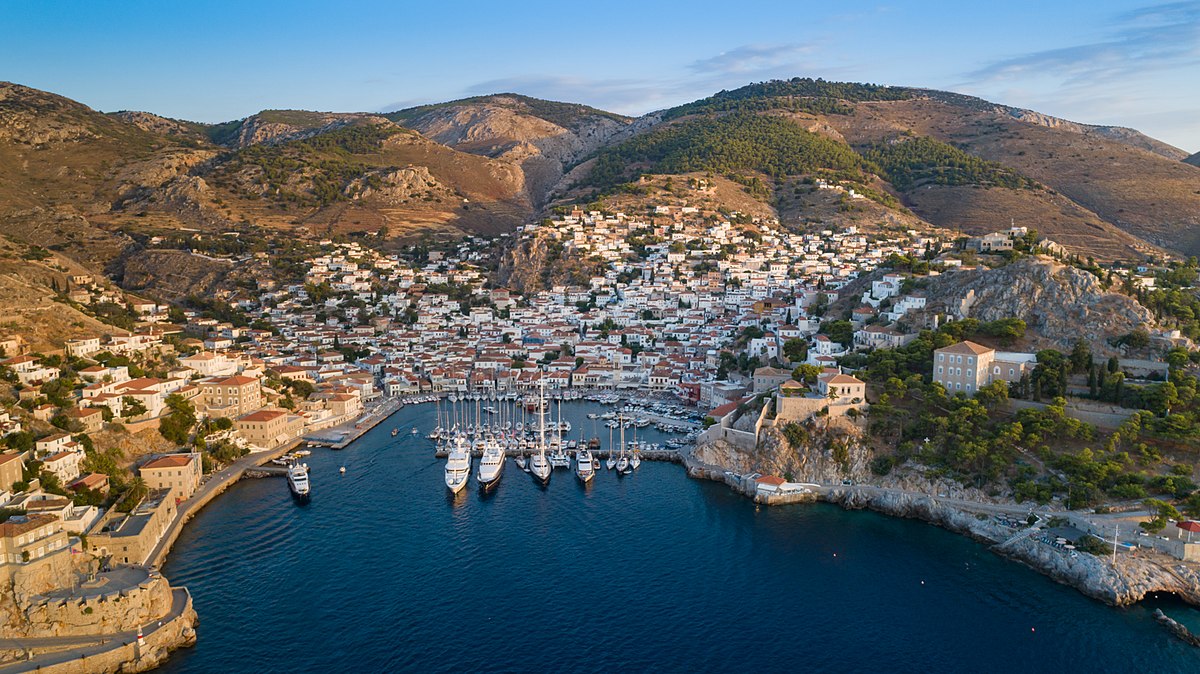Most Greeks have substantial familiarity with the graphically gorgeous island of Hydra due to the island’s protagonist role in the epic struggle of the Greek War of Independence.
Most non-Greeks familiar with the island know it as a place of graphic beauty, an artistic haven, and a place where time has stopped due to the absence of cars and architectural eyesores from a later era.
What is less known is that Hydra might and ought to be considered the true home of the modern Greek merchant marine.
In a country with millennia of history at sea, at first it seems counterintuitive to declare that Hydra is the birthplace of the modern Greek fleet. While there is evidence that Hydra played a maritime role in even the most distant past, a riddle implicit in the island’s very name, certainly larger islands like Chios, Andros, Syros, or Cephalonia seem to be more likely candidates for the title of the birthplace of the Greek merchant fleet.
Certainly, some of the most prominent historians of the Greek Merchant Marine, particularly Professor Gelina Harlaftis of Ionian University, speaks of the “Ionian” and “Chiot” eras of shipping but never of the Hydriot.
Hydra island has the right to the claim. But why?
Part of it may be the insularity and insular patriotism of a Hydriot, and herein, I plead guilty. Yet, in making my case, I offer the following reasons.
Hydra island went all in on shipping. As a small, rocky island with virtually no level land or agricultural or natural resources, the choice was either shipping or starvation. The Hydriots chose the former and nearly fifty percent of the population was in some way involved with shipping. Hydriot shipping was vertically integrated with shipbuilding, piloting, financing, and management all locally concentrated. This resulted in a population completely focused on the skills and ethos of shipping.
Furthermore, though Hydriots as young as seven years of age would often go to sea, the Hydriots believed that shipping was a knowledge business, and they established the world’s first merchant marine academy, which opened its doors as a regular school in 1749. Nonetheless, by 1800, it had evolved into a true shipping academy with emphasis on navigational, commercial, economic, and linguistic skills. This academy continues to the present day and is rightly considered the “Gold Standard” of Greek shipping academies. Interestingly, shipping historians neglect to mention this.
The Turks understood very clearly the value of Hydriot sailors, and as a price for the island’s vaunted autonomy from the Turks, the island had to provide (as did a handful of other islands) a levy of sailors for the Ottoman Navy. Hydra always furnished a greater number of sailors than did other islands, and if anything, this only increased Hydriot naval agility. When the time came, the Hydriots’ intimate knowledge of Turkish tactics would prove fatal to the Turks.
The Hydriots also learned how to navigate politics and economics with the same acumen as they did the waves and shoals of the Mediterranean and Black Seas and, eventually, the Atlantic. They made tactical use of the Russian flag (available to Orthodox Ottomans after 1774) or the Ottoman as needed and rode a fine line between commerce and piracy as needed in the Napoleonic Wars. Hydriots were the first regular visitors to the Americas and a Hydriot played a key role as an admiral (Colonel of the Marines) for the Argentine fleet in its war of independence from Spain.
Subsequent Greek merchant mariners would either consciously or unconsciously be reading from the Hydriot playbook. Don’t believe that Onassis developed the flag of convenience; the Hydriots had been doing it for years.
Finally, as implied above, the Hydriots “kept it in the family” or at least on the island. While, occasionally, a Chiot or other diaspora investor would pitch into a ship or a voyage, by and large the investors, captains, and crew were all in the same family with an ownership interest in the voyage outcome.
This would often result in a major windfall to a family’s standard of living which had major affirmative benefits to the island’s economy. In spite of the narrow resources of the island, a good portion of the ships were locally constructed with local timber until the scale of operations and the Hydriot’s buying power required larger ships.
When the time came to rise up against the Turks, the Hydriots hesitated for a moment— given their vast wealth and relative independence—before they went all in for faith and country. Their ships, fortunes, and lives were put into the cause, and, though no Turk set foot on the island, Hydra’s ships and fortunes, and far too many of her stalwart sailors, lay at the bottom of the ocean.
The island never recovered her shipping fortunes, but the Hydra model of family firms, which employed local sailors with a combination of commercial, nautical, and political savvy, proved a winning formula. Other larger islands took the Hydra model to a larger scale, and, crucially, adjusted it to the changes of times and technology.
Hydriots would continue to pilot and crew ships, and into my youth, to build seaworthy wooden caiques now departing the scene. From time to time, sailors would once again prove the mettle of the Hydriot, such as in the Balkan Wars and in both World Wars. Furthermore, the Nautical Academy would turn out hundreds of classes of brilliant captains.
Source: Greek Reporter







